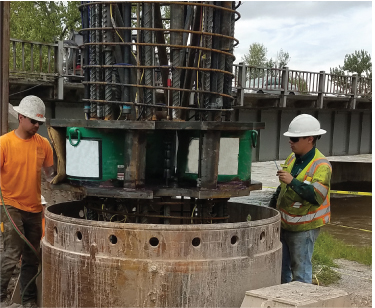
Bi-Directional Pile Load Test
The Bi-Directional Pile Load Test (BDSLT) is an advanced method for determining the axial capacity of deep foundations. Unlike standard top-down load testing, this approach requires inserting one or more hydraulic Osterberg Cells (O-cells) into the pile during construction to provide upward and downward forces from within the shaft. This method enables for simultaneous testing of the pile shaft and base resistances without requiring big reaction systems or beams. This test, which complies with ASTM D8169, is particularly beneficial for high-capacity or space-constrained facilities. BDSLT provides a safer, quicker, and more cost-effective method of evaluating deep foundation performance by removing the requirement for large load installations and ground anchoring devices.
Advantages of Bi-Directional Pile Load Test:
- Tests high-capacity piles with minimal setup requirements.
- Measures shaft and end-bearing resistance separately.
- Eliminates the requirement for external response systems.
- Ideal for crowded or limited access job locations.
- Complies with the ASTM D8169 standards
- Increases accuracy in deep foundation design validation.







 US 24523
US 24523  BR 23130
BR 23130  GB 15647
GB 15647  CA 9734
CA 9734  AU 8740
AU 8740  IE 5962
IE 5962  TR 3129
TR 3129  IQ 2643
IQ 2643 

